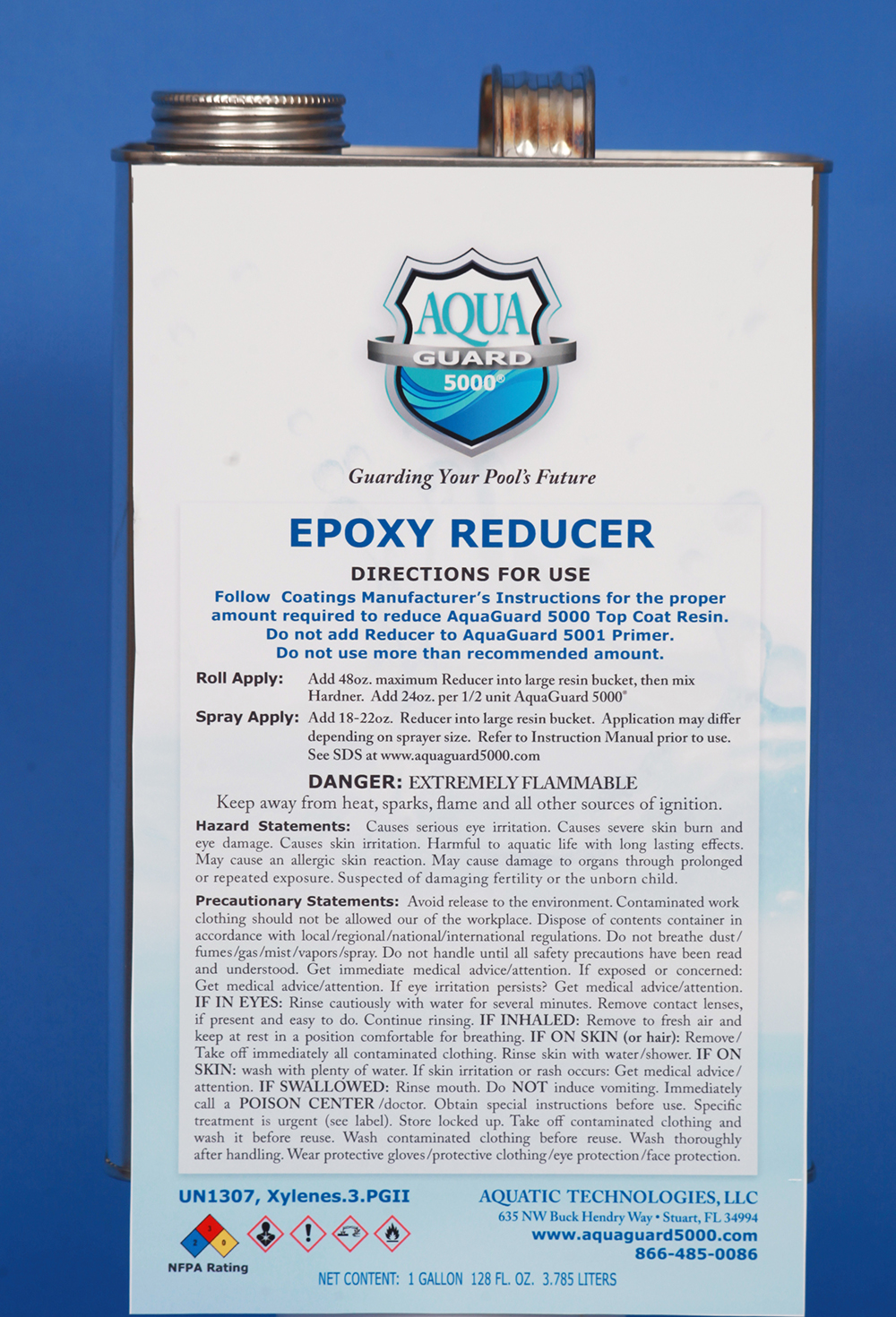Epoxy coatings are popular in industrial and construction applications due to their durability, chemical resistance, and ability to protect surfaces from corrosion and wear. However, working with epoxies can be challenging due to their high viscosity. This is where epoxy reducers are useful.
What is an Epoxy Reducer For?
An epoxy reducer, also known as an epoxy thinner, is a solvent blended with epoxy to lower its viscosity and make it easier to apply. Common reducers for epoxies include xylene, acetone, and methyl ethyl ketone (MEK).
Adding a reducer makes the epoxy less viscous so that it can be brushed, rolled, or sprayed onto surfaces more easily. This improves the epoxy’s flow and wetting properties. Epoxy reducers also help manage the coating’s film build and sag resistance.

Properties and Benefits
There are several key benefits to using an epoxy reducer:
Improved Application
Thinning epoxies with a reducer enables easier, more efficient application. The coating flows and spreads better over the surface. This is especially helpful for spraying epoxies or applying them to vertical or irregular surfaces.
Adjustable Viscosity
Epoxy reducers allow users to adjust the viscosity of the coating to suit the specific application method and surface. Less viscous epoxies work better for porous substrates, while thicker epoxies are preferred for build and sag resistance on non-porous surfaces.
Slowed Cure Time
Some epoxy reducers like xylene can slow down the cure time, which provides more working time for large-scale applications. The epoxy remains fluid for longer.
Cleaner Application
Properly thinned epoxies have better flow and surface wetting, reducing the chances of runs, drips, or sags forming. This results in a smoother, more professional finish.
Faster Cleanup
Epoxy residues clean up faster with reducers like xylene or MEK. Brushes and equipment can be cleaned before the epoxy cures.
Choosing the Right Epoxy Reducer
With different types of epoxy reducers available, selecting the right one for your specific coating and application is important. Here are key factors to consider:
Compatibility
The reducer must be compatible with the epoxy resin. Check manufacturer guidelines. Acetone works with most epoxies.
Evaporation Rate
Faster evaporating reducers like acetone offer a shorter working time vs slower evaporating xylene.
Regulations
Some reducers like xylene have restrictions depending on the region. Always check local VOC regulations.
Substrate Porosity
More porous surfaces often require a higher reducing ratio for proper penetration.
Desired Coating Properties
Higher reducing levels can affect gloss, chemical resistance, and other performance factors.
Proper solvent selection ensures optimal epoxy application while achieving the required coating properties. Compatibility testing on a small sample area is recommended. Follow the epoxy manufacturer’s guidelines for mix ratios. Too much reducer can inhibit cure.
Application Tips and Best Practices
Here are some key tips when working with epoxy reducers:
- Carefully measure mix ratios using precise scales/pumps to avoid errors.
- Slowly add reducer to epoxy under agitation for proper blending.
- Apply in ambient and surface temperatures within the product guide. Epoxy won’t cure properly if it is too cold.
- Allow sufficient airflow for proper curing. Solvent vapors can be flammable.
- Clean tools and spray equipment immediately after use with appropriate solvent.
- Follow all safety precautions – use respiratory protection, gloves, goggles, etc.
Uses Across Various Applications
Epoxy reducers enable successful application across many different industries:
Metal Fabrication – Applying epoxy coatings to fabricated metal parts and structures.
Wood Stabilization – Penetrating epoxy resins to strengthen and preserve wood.
Industrial Flooring – Thinning floor coating epoxies for easy rolling on concrete.
Composite – Reducing epoxy adhesives and matrix resins for boats, aerospace, and automotive parts.
Protective Coatings – Thinning tank, pipe, and container linings for corrosion protection.
With the right epoxy reducer, users can optimize resin viscosity for their specific coating challenges and reap the many benefits epoxy coatings offer. Test small areas first and follow all safety guidelines for best results.
Frequently Asked Questions about Epoxy Reducer
1. How much epoxy reducer should I use?
The amount of reducer depends on the specific epoxy product. Always follow the manufacturer’s recommendations for proper mix ratios. As a general rule, most epoxies can be reduced 10-20% by volume. Start with 10% reducer and test the viscosity. Add more in small increments if needed. Too much reducer can inhibit curing.
2. Can I thin epoxy that has already started curing?
No, epoxy reducer should only be added to fresh uncured epoxy resin. Once the epoxy starts curing, it is not possible to reduce the viscosity. Only mix as much epoxy as you can use within the working time.
3. Is there an epoxy reducer that is VOC exempt?
Yes, some water-based epoxy reducers like AquaGuard’s Epoxy Reducer meet VOC restrictions. These are composed of exempt solvents and work well to reduce water-based and some solvent-based epoxies. Always check local regulations for exempt status.
Choosing the Right Epoxy Reducer
Proper use of epoxy reducers enables users to optimize the viscosity of epoxy coatings and adhesives for ease of application. With the right reducer selection and mix ratio, epoxy resins can be successfully applied to substrates while achieving desired film thickness and performance properties. Be sure to follow all safety precautions. Test small areas first to dial in the ideal viscosity for your specific coating challenges.
Epoxy reducers are a useful tool for achieving professional quality results across many industrial and construction applications. Contact our experts at AquaGuard 5000 today to learn more about our VOC-exempt and high-performance epoxy reducers.







